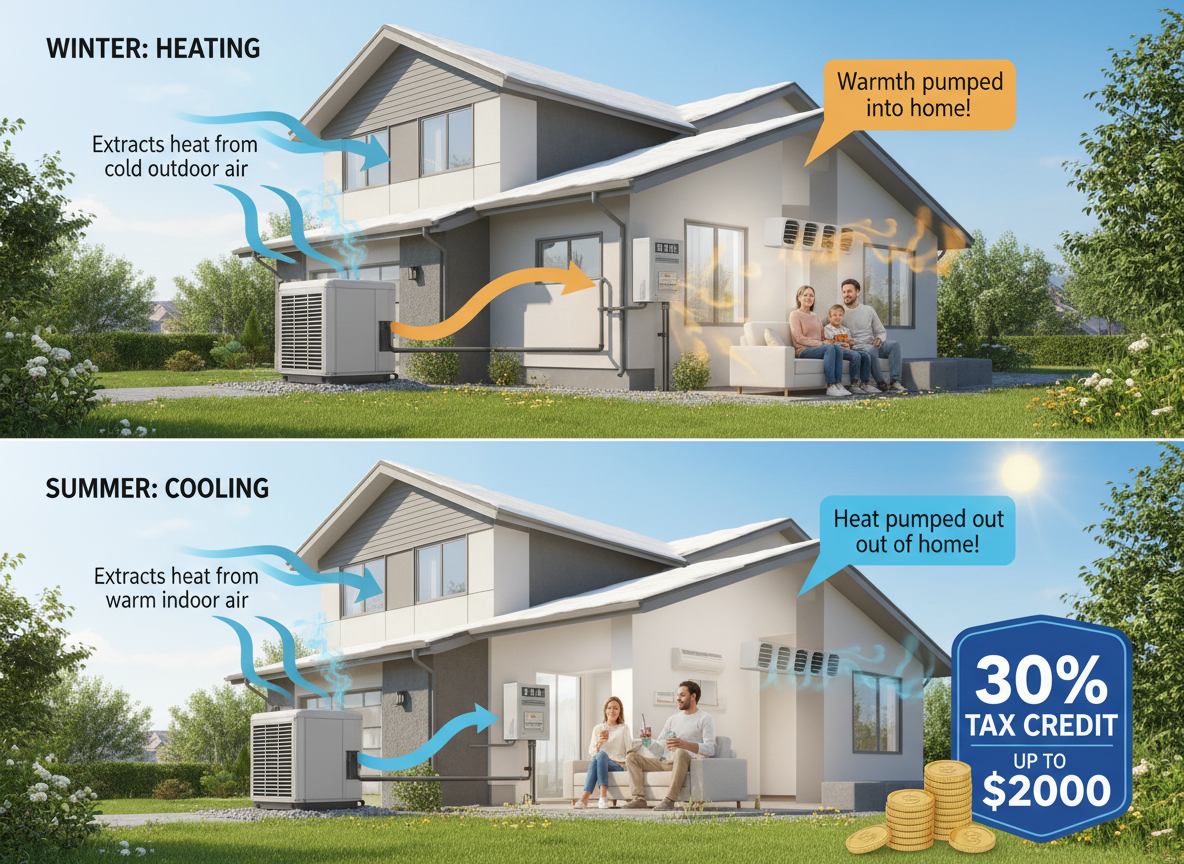
How It Affects Cooling/Heating Efficiency
Heating and cooling your home accounts for nearly half of your yearly electric bills. As a result, it is important for homeowners to consider ways to save energy and lower cooling and heating costs. Of course, annual AC maintenance and furnace maintenance is essential in keeping the HVAC system operating properly and efficiently. Furthermore, annual maintenance can help minimize unexpected costly repairs.
However, there are additional steps you can take to ensure you are saving energy while cooling or heating your home. One simple thing that many homeowners fail to check is the ceiling fan direction in which blades are running. Ceiling fan direction can affect both cooling and heating efficiency.
How A Ceiling Fan Works
Ceiling fans effectively circulate air in a room to create a draft throughout the room. Most ceiling fans are reversible by design. They have a button that controls the direction the blades turn. The easiest way to determine the direction of the blades is to set it on the lowest speed setting and look up to see the direction the blades are turning.
Ceiling Fan Direction – Cooling for Spring and Summer
To aid with summer cooling simply adjust the blades so they rotate forward or counter clockwise, oftentimes this is the default setting. When the fan turns counter clockwise during the summer it creates what is called the wind chill effect. As the air moves around, the moisture on your skin evaporates faster, creating a cooling effect even though the actual room temperature remains the same.
Keep in mind a ceiling fan will not actually lower the temperature of the room it just feels like it does by increasing comfort. If you use your air conditioner and ceiling fan, you can raise the temperature setting on the thermostat by several degrees and save energy and money and maintain the same comfort level. On a warm day you may be able to use your ceiling fan only and avoid turning your air conditioner on. Remember to turn ceiling fans odd when you leave the room, fans only cool people not the actual room.
Ceiling Fan Direction – Heating for Fall and Winter
As we all know, warm air rises. During the cooler months if you adjust your ceiling fan direction to turn clockwise, the fan will bring cold air up and move the warm air from the ceiling and down into the room. As a result, this helps raise the room temperature by dispersing the warm air throughout the room.
The thermostat in the room will also be able to detect the warmer air and will not kick the furnace or heat pump on as soon therefore saving you money on heating costs. There is no need on your part to adjust the thermostat downward.
Save On Heating and Cooling Costs
By running your ceiling fans you can maintain comfort level and decrease the AC or Furnace workload. As the seasons change be sure to check your ceiling fan is turning in the right direction. Heating and cooling your home can be costly, but this is one simple way to help reduce energy costs.
A ceiling fan is a valuable resource when used properly. Furthermore, by helping you operate your system less you also reduce wear and tear on the equipment extending the lifetime of your HVAC system.
Give LA Heating & Air A Call Today
LA Heating and Air offers both commercial and residential heating or AC repair, maintenance or replacement. To schedule an appointment give us a call at 818-341-3406 or contact us online. We would be more than happy to assist you.
Ceiling Fan Direction: How It Affects Cooling/Heating Efficiency Related Posts:






















.png)














